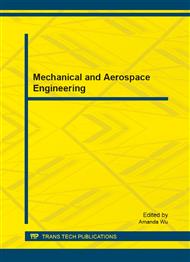p.592
p.603
p.609
p.614
p.620
p.625
p.631
p.635
p.639
On the Optimization of Vent Arrangement in a Subway Station
Abstract:
Toxic gases resulted from fire events in subways stations are more dangerous than high temperature radiation from it. So, a well designed smoke exhaust system must be installed in subway station to control the smoke’s propagation and discharging. Smoke extraction in subway station depends on the duct laid above the ceiling, so vents are situated in the same level of platform layer’s ceiling. If subway station catches fire, smoke will cumulate in smoke reservoirs at the beginning and mechanical fan cannot exhaust any smoke in this process. In This paper, FDS 5.0 is used to simulate smoke’s movement in a side platform of an actual subway station in case of a fire. Simulations are carried out at the same volume flux of mechanical fan to investigate the effects of height of vents and depth of smoke reservoirs.
Info:
Periodical:
Pages:
620-624
Citation:
Online since:
November 2012
Keywords:
Price:
Сopyright:
© 2012 Trans Tech Publications Ltd. All Rights Reserved
Share:
Citation:


